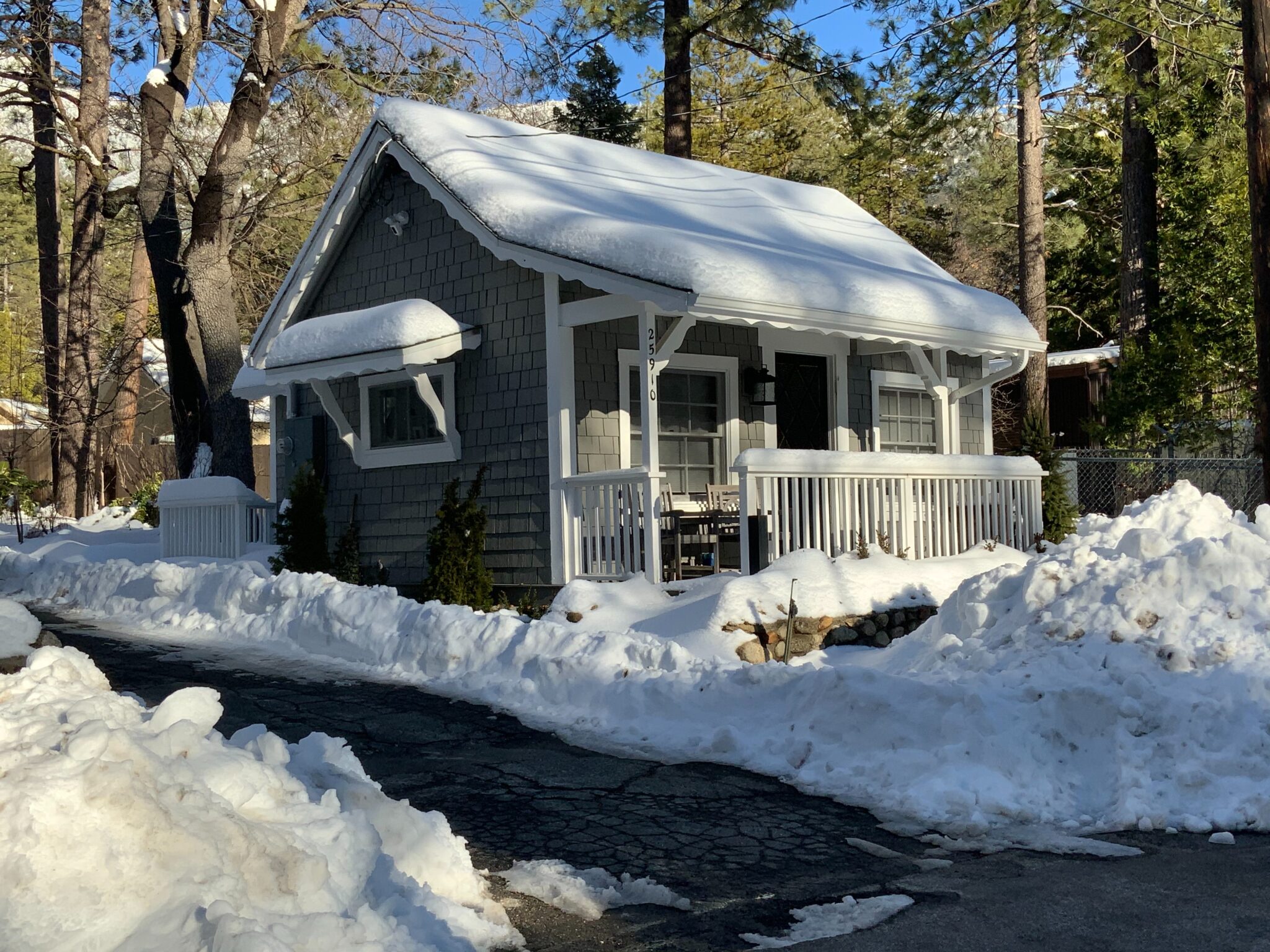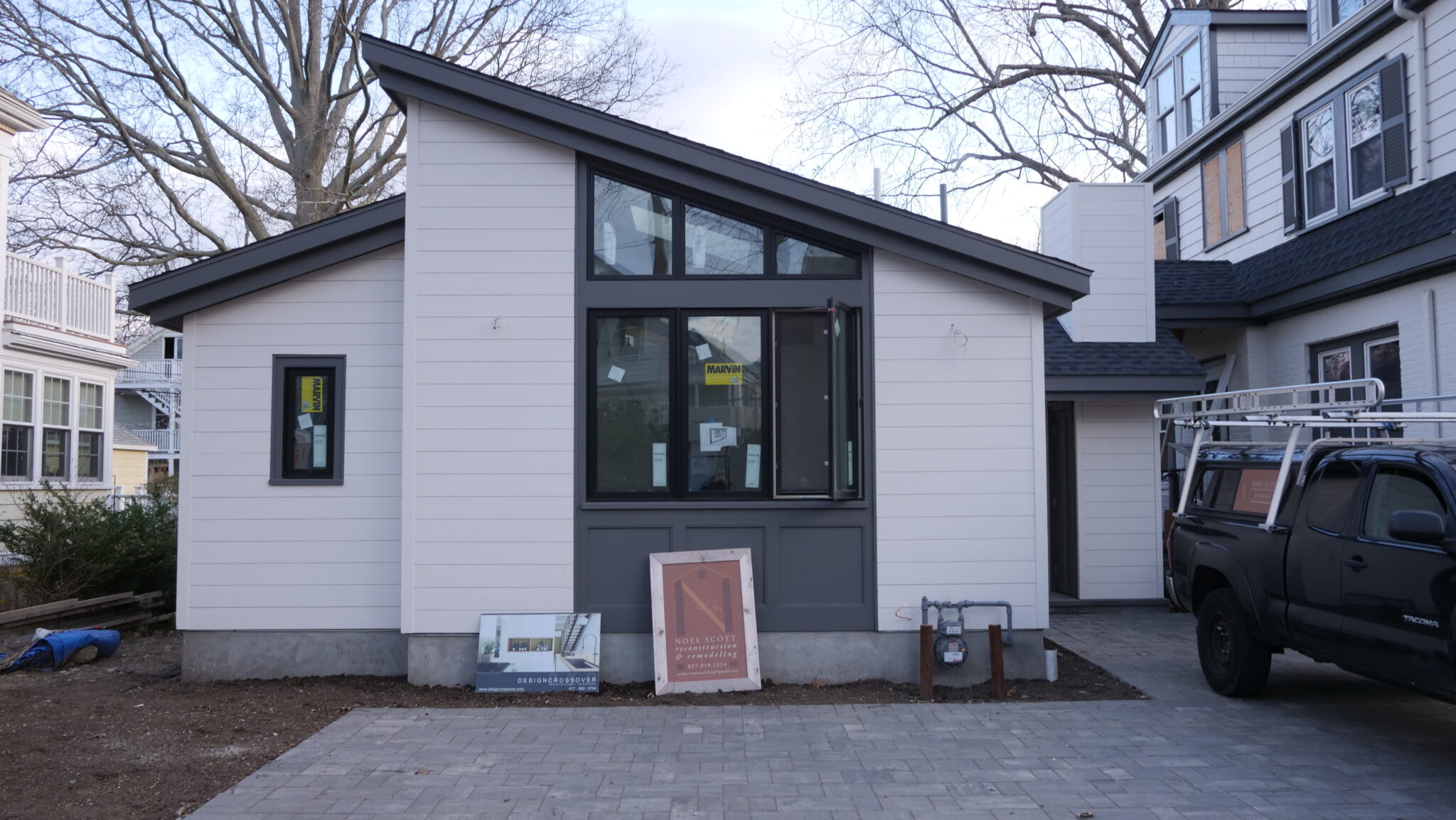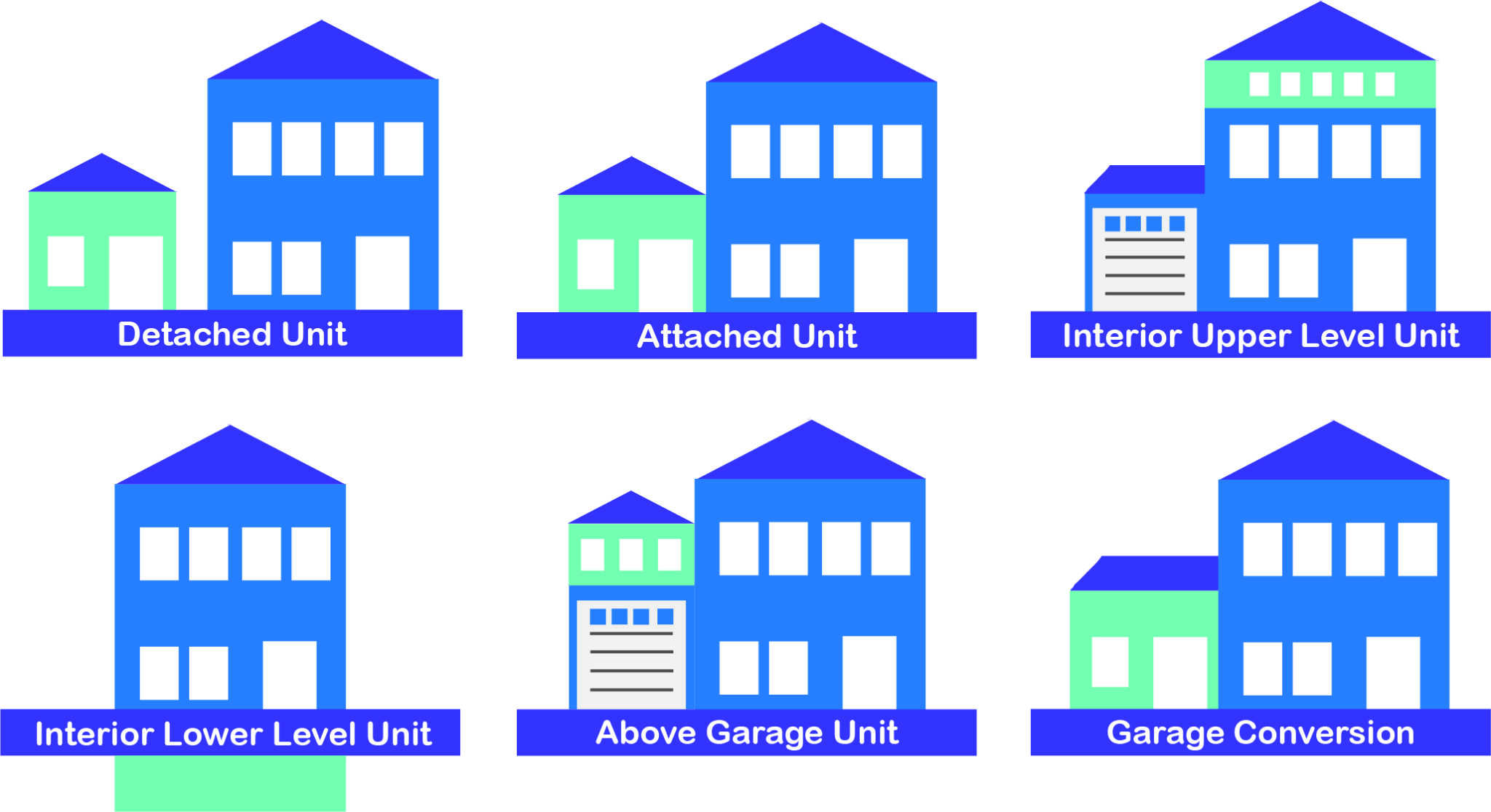Affordable Homes Act Policy Spotlight: Accessory Dwelling Units
Written by Matt Walsh, Policy Analyst
*Update* - ADUs legalized statewide!
On August 6, 2024, Governor Maura Healey signed the Affordable Homes Act into law. With this legislation, Accessory Dwelling Units (ADUs) are permitted by-right in single-family zoning districts in all communities. The final legislation limits ADUs to 900 SF, prohibits owner occupancy requirements, and limits parking requirements if located within ½ mile of transit. Read the full text of the legislation here. The legislation notes that EOHLC may prepare guidelines or regulations to guide implementation of the law.
When will the law go into effect?
February 2, 2025 (180 days after the law was signed).
What does this mean for cities and towns?
For communities who do not currently regulate ADUs or explicitly prohibit ADUs, they will be regulated by this new state ADU provision. Any prohibitions on ADUs will be unenforceable after February 2, 2025.
For communities who have an accessory dwelling unit bylaw and ordinance, sections of your regulations that conflict with the new state law (e.g., an owner-occupant requirement) will be unenforceable. You may decide to amend your ordinance or bylaw to be consistent with state law, but this does not have to happen by February 2, 2025. February 2, 2025 is not a “compliance” deadline.
For communities who wish to amend their ADU bylaw within the parameters of the new state law, such as updating development review procedures to include ADUs, clarifying dimensional requirements, or adding requirements for short-term rentals, you may do this. It does not need to be done by February 2, 2025, since this date is not a “compliance” deadline. You may want to prioritize updating administrative development review applications and procedures by the effective date.
More information and resources to come!
MAPC is working on updated ADU resources to support cities and towns as this new law is implemented. If you have any questions or suggestions for how MAPC can help your community, please reach out to Andrea Harris-Long, Manager of Housing and Neighborhood Development, at [email protected].
A Small Change That Can Achieve Big Results
May 22, 2024 - Almost every week, a news article is published that highlights the magnitude of the housing crisis in Massachusetts. Just last month, the New York Times highlighted one phenomenon that planners across Massachusetts hear every day in our communities. Aging residents want to downsize their homes, but they cannot find a new, smaller home that fits their price range and unique needs. Many would love to find a small home in their same community, with minimal maintenance required, and only one level to help with their aging mobility needs.
There are several bills pending before the Massachusetts State Legislature this session that would help the Commonwealth build the housing it needs. These bills include the Governor’s Affordable Homes Act (AHA), which offers meaningful opportunities to partner with cities and towns, policies, and funding to respond to this crisis.
Enter the accessory dwelling unit.
One Solution: Accessory Dwelling Units
Accessory dwelling units (ADUs) are apartments located inside a single-family home or in a detached structure, such as a garage or carriage house. Sometimes known as granny flats, in-law apartments, or secondary dwelling units, they include a kitchen, bath, and usually at least one bedroom.
ADUs were prevalent before World War II throughout American cities and towns, often housing in-laws and extended family members. However, restrictive policies that prohibited multi-family development largely zoned ADUs out of existence in the post-war era. When we talk about the “character of communities,” it’s important to remember that ADUs have long been a part of the character of communities across Massachusetts.
This only changed as restrictive zoning laws were put in place to exclude low-income residents and residents of color from certain neighborhoods. As a result, it’s now harder for young people to find a modest place to live, harder to support aging relatives or relatives with a disability, and harder to foster the vibrant multi-generational neighborhoods that helped make the Commonwealth what it is today. While prohibitions against ADUs are not the only reason for these challenges, removing these prohibitions is an important part of addressing this history of exclusion and restoring the diversity of housing types necessary to meet residents’ needs.
Beginning in the 1970s, a handful of municipalities began to write ADUs back into their zoning, recognizing them as one important solution to high housing costs. Nationally, Oregon and California are at the forefront of creating flexible zoning to encourage ADUs. More locally, Maine and Vermont have allowed ADUs statewide. This year, Massachusetts has the chance to join these states in allowing ADUs by-right, making it easier for residents to find a modest and affordable home and be closer to loved ones who need support.
Across Massachusetts, 56% of all homes are single-family. [1] That’s over 1.7 million single-family homes that could potentially accommodate an accessory dwelling unit (ADU). Accessory apartments are so unobtrusive that they usually can’t be seen from the street. Over time, even if only 10% of these homeowners chose to build an ADU, that could eventually create 170,000 new homes in Massachusetts that could be affordable. The new homes would meet the needs of aging adults looking to downsize but stay in the same town or near family, younger singles who might be in school or starting their first job, and caregivers for people with disabilities, etc.
In many communities across Greater Boston, the share of single-family homes is even higher; Norfolk, Sharon, Wayland, Sudbury, Middleton, and Wenham are just a few municipal examples where single-family homes comprise more than 85% of the local housing stock. In these suburban communities, lot sizes are often larger, too. Ranging from 1-acre to 3-acres or larger, these lots could easily accommodate an accessory dwelling unit. MAPC explored what smaller housing options like ADUs could look like and where they could better meet residents’ needs in suburban communities through our Living Little project. ADUs were highlighted alongside other smaller housing types like cottage housing, tiny houses, townhouses, and single-family home conversions.
[1] American Community Survey, 2022.
Opportunity for ADUs in the Affordable Homes Act (H.4138)
Under the Affordable Homes Act, ADUs would be allowed by-right across Massachusetts. Many Massachusetts communities have taken steps at the local level to allow ADUs, but barriers to cost-effective and timely construction are often embedded in these local policies. These barriers include: special permit requirements that lengthen the permitting process; occupancy requirements that limit who can live in an ADU; whether the ADU can remain when ownership changes; and parking minimums that drive up construction costs among other challenges. The Affordable Homes Act would remove some of these barriers (by-right approval, limiting parking requirements, removing owner occupancy requirements) while leaving flexibility for cities and towns to customize ADU policies for their local context, particularly when it comes to short-term rentals - something that is a concern for many coastal and seasonal communities.
The Executive Office of Housing and Livable Communities (EOHLC) estimates that 8,000 - 10,000 ADUs are likely to be built over the next five years if this state policy were adopted. Allowing by-right ADUs in all residential districts can ensure that all owners of single-family homes can construct an ADU if they choose. Local policies could even incentivize ADU construction, as we see in other parts of the country, where streamlined permitting and pre-approved building plans exist for homeowners interested in helping address local housing needs. Incentives are already employed in some Greater Boston communities, like Salem, where the city received state approval in 2022 to offer a property tax exemption to owners who rent their ADU at an affordable rate.
Take Action!
Time is running out. Giving Massachusetts residents more housing options is critical in ensuring they can continue to call the Commonwealth home, and the Affordable Homes Act provides many of the solutions we need to do just that, including these provisions easing ADUs! With the House Committee on Ways and Means expected to take up the bill in the coming weeks, we need you to reach out to your legislators today to advocate for common sense policies to address our housing crisis.
Send an advocacy letter to your Representative and Senator today! Click here for MAPC’s template to get you started.
Quick Facts about ADUs and the Affordable Homes Act Proposal
What are they? Apartments located inside a single-family home or in a detached structure, such as a garage or carriage house. Sometimes known as granny flats, in-law apartments, or secondary dwelling units, they include a kitchen, bath, and usually at least one bedroom.
Examples of ADUs in Massachusetts
What is proposed in the Affordable Homes Act?
The Governor’s proposal defines ADUs as a self-contained housing unit that maintains a separate entrance and is not larger than 900 square feet or half the gross floor area of the principal dwelling, whichever is smaller. The proposal allows municipalities to impose additional restrictions, such as additional size restrictions or restrictions or prohibitions on short-term rentals. ADUs may be subject to site plan review and dimensional regulations (setbacks, height requirements, etc.). The proposal prohibits requiring owner occupancy of either the ADU or the principal dwelling. New parking requirements would limit the amount of parking that can be required – no more than one additional space. If the ADU is within a half-mile of a transit station (including commuter rail and ferry terminals), no parking spaces can be required. Read the full text proposal in Sections 12 and 13 of the Affordable Homes Act, linked here.
Learn More about ADUs and the Affordable Homes Act
- MAPC’s Living Little Report
- Healey Driscoll Administration Research and Analysis (includes section on ADU)
- “Statewide zoning could boost accessory dwelling unit construction,” Boston Globe Editorial Board, September 2023.
- The State of Zoning for Accessory Dwelling Units (Dain Research, 2018)
- AARP Livable Communities – All About Accessory Dwelling Units
- Healey-Driscoll Administration Launches Housing Campaign with Municipal Leaders to Highlight Local Solutions to High Housing Costs
- Healey-Driscoll Affordable Homes Act Resources





